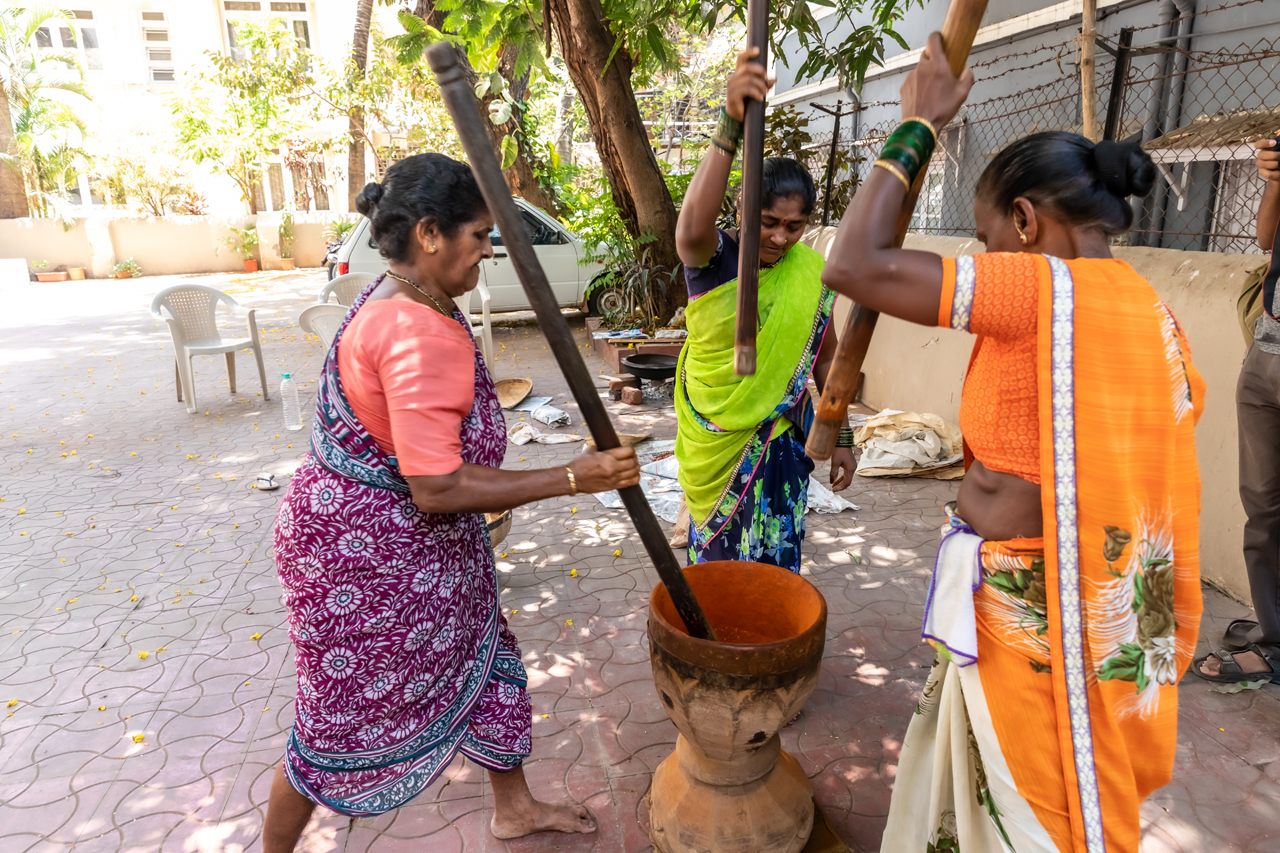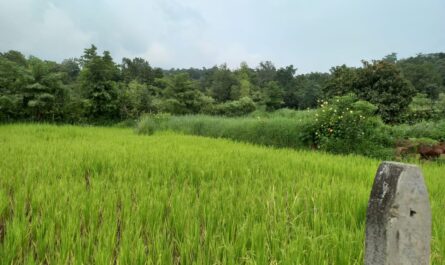It’s been a relatively quiet few months at the Farm. After our dismal rice harvest, we have been a bit subdued. Not getting our expectations too high and not letting disappointments crush our spirits.
Our soil analysis showed a serious lack of nutrients in the two new fields that were discovered during the government survey, and we are working to add organic fertiliser and other nutrients to get the fields ready for the next paddy season.
The roads remain awful. Our poor ‘farm car’ has suffered two punctures and one dramatic tyre burst in the last 2 months! Various PILs (Public Interest Litigations) in the Bombay High Court asking for NH66 to be urgently repaired for public good have yielded vague assurances that the highway will be fixed by February 2024! That’s one long year away!
Regardless, we are soldiering on. Wheat, sweet corn, bajra (Pearl Millet), and loads of brinjal, tomatoes, chilli, and watermelon have been planted and seem to be doing well but we’ll count our blessings only after we get the harvest. We have had fair success with methi (fenugreek), mooli (white radish) and coriander but, this is a farm, not a kitchen garden, so while we are moderately pleased, we aren’t anywhere near delighted.
When we planted our paddy last monsoon, we also sowed a small batch of turmeric.
The turmeric plants seemed to be flourishing for a while, but after we had harvested our small quantities of rice, we noticed the turmeric leaves had dried and wilted. We walked past the patch without a question as we assumed this was yet another failure.
Days and weeks went by, and it was time to plant the bajra. While discussing which field we would plant the bajra, our Imp said it was best to use the area where we had grown the turmeric. He said he would harvest the turmeric and get the field ready for the bajra. Curious now, we walked back to the turmeric patch and to our considerable surprise, under the dried yellow leaves were rows of turmeric roots ready to harvest! Little did we know, the turmeric rhizome is ready to harvest when the leaves and stem turn brown and dry, about seven to ten months after planting, usually between January and March. Yes, I should have known this. I could have asked the Imp or Farm Consultant S, or even Aunty Google, but I was so disillusioned by our miserable rice harvest, I wasn’t asking about a patch of dried, yellow turmeric leaves.
Over the next few days, the Imp and his wife harvested the turmeric and promptly sent us a photograph. When we next went to the farm, we got back a modest but unexpected 1.5kg of fragrant, fresh organic turmeric roots.
Now that we had all this turmeric we didn’t really know how to convert it to turmeric powder. Aunty Google came to the rescue again and along with a few practical tips from mum’s house help, we learned that fresh turmeric needed to be cured before it is dried and powdered. So, after thoroughly washing the turmeric, we boiled it till the scum floated to the surface and the kitchen was filled with a sharp turmeric fragrance. Boiling, it seems, allows the starch in the turmeric to gelatinize and helps in intensifying the colour and giving a uniform distribution of colour throughout the rhizome. Who would have thought?!
After the turmeric cooled, I chopped it into the thinnest slices I could to get the maximum surface area for drying. And, although it was tedious work, my Fitbit was delighted! In that one hour of chopping, my Fitbit figured I had walked 3.5km, done 55 minutes of activity and burned a staggering 1000 calories! Go figure!
Once chopped, it was dried on the balcony for a week till the turmeric slices reached a stage where they did not bend but snapped sharply when twisted.
Then, we had to figure out where to get the dried turmeric powdered. All the traditional neighbourhood spice mills have downed their shutters as everyone now uses packaged spices. Also, the old days of getting spices ground by muscular Maharashtrian ladies with stout sticks working in tandem over a large wood mortar are obviously no more.

We asked around and made several calls but found no joy. Senior Mrs Stonethrower said her chauffeur knew of a place at Chinchpokli that may work for us, so we kept that in mind as a last resource as getting there is a nightmare and parking is almost impossible. I even called the most well-known spice shop in Bandra Bazaar and was surprised when they admitted to buying all their spices pre-powdered and mixing them according to their traditional recipes for their special masalas (spice mix).
Exasperated with all this delay, Mr Stonethrower announced we would use our precious Vitamix to grind the turmeric. I wasn’t best pleased as I thought it would damage the blades and stain the jar. But, I gave in after a few minutes of hesitation as I really was really eager to see the end result.
Et voila, in 5 mins we had super fine, golden, fragrant turmeric powder. After we strained it through a fine sieve and gave it another blast in the Vitamix, it was as fine as any store-bought turmeric powder. And the fragrance!!! Sharp, pungent, and absolutely intoxicating. The colour is deeper than anything you can ever get out of a packet. It’s the deep rich colour of 24-carat gold. And because it’s absolutely pure, a little pinch goes a long way.
1.5kg of fresh turmeric, yielded 350 gm of dried turmeric powder. Not a very large quantity, but an unexpected, unadulterated (pun intended) success.
Next monsoons, we plan to reserve a large field exclusively for turmeric, and my Fitbit can’t wait for me to get chopping😊



I can’t wait to try a batch of the haldi! When will it be commercially available?!
Next year around this time…I hope